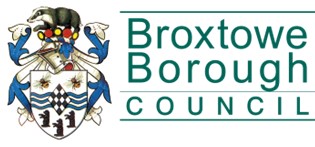Welcome to the fifth edition of the D2N2 Economic Recovery Report.
This report pulls together information from across the region to understand the impact of Covid-19 on our economy.
For previous editions of the D2N2 Economic Recovery Report, please see the D2N2 Data Centre.
D2N2 Economic Recovery Report – October 2020
As part of its response to the Coronavirus, D2N2 is producing data reports examining how the Coronavirus pandemic has affected the local economy.
The report has been produced in collaboration with the University of Derby, the University of Nottingham, and Nottingham Trent University.
This latest report focuses on several key areas:
- D2N2 Economic Recovery Analytics Group
- D2N2 Economic Risk and Recovery Dashboard
- D2N2 Growth Hub Survey Findings
- Impact on High Growth Businesses
- Unemployment Benefit Claimants
- Income Support Scheme Claims
- High Street Recovery Tracker
- Community Mobility Google Reports
- ESIF Programme Response to Covid-19
- Redundancy Support Service for Apprentices
- Midlands Engine Overview
A PDF version of this D2N2 Economic Recovery Report is available for download.
2. D2N2 Economic Risk & Recovery Dashboard
The Economic Risk and Recovery Dashboard has been updated using August data where available. The updated version with the latest figures can be accessed here.
The dashboard contains snapshot estimates of unemployment and GVA estimates, and data on claims to furlough schemes.
It also contains trends in unemployment benefit claims, job postings, business closures, and insight from the D2N2 Growth Hub Survey on redundancies and severe decline in sales.
1. D2N2 Economic Recovery Analytical Group
The D2N2 Economic Recovery Analytical Group (AG) is drawn from the region’s universities, colleges, local authorities and business groups together with colleagues from Government.
It undertakes pro bono research and analysis to support planning and delivery by the LEP and the Derbyshire and Nottinghamshire Local Resilience fora.
The AG supports the work of our Economic Recovery Board, which leads to the revision of our Local Industrial Strategy to become a Recovery and Growth Strategy.
Key tasks now include:
- Revising our analysis of Covid-19’s sectoral impact and employment: Full first report
- Ensuring that recent government announcements, for example, the Kickstart Fund, are targeting where they will have the most effect in our region.
- Guiding development of the D2N2 Economic Recovery and Growth Strategy and providing advice on the development of the local level economic recovery plans commissioned by the LRFs
- Developing a suite of economic indicators to help us monitor the progress of the recovery
- Working with the Emergent Alliance to develop tools to enable real-time tracking of the impact of Covid-19 and enhancing our ability to forecast future impact
The guidance from Government on what the new three-tier system of Covid-19 restrictions is available here.
3. D2N2 Growth Hub Survey Findings
Working alongside business representative organisations and local authorities, a consolidated survey has allowed the collection of standardised business data to inform recovery planning.
Headline findings of the third wave of the Growth Hub Survey indicate that in August:
- 82% of respondents were trading;
- 62% furloughed staff (compared to 71% in the previous wave covering the period from April to August), and 13% made staff redundant (compared to 6% in the previous wave);
- 55% of respondents report a severe decline in sales (over 50% decline) compared to 72% of respondents to the previous wave.
A more detailed analysis of the data is available here.
6. Income Support Scheme Claims
Based on HMRC data released in August, there were 325,200 Coronavirus Job Retention Scheme (CJRS) and 74,900 Self-Employment Income Support Scheme (SEISS) claims made as of 31 July. This makes up approximately 36% of all people in employment.
The most recent national data, which includes claims for periods up to 31 July, indicate a decrease in the number of furloughed employments across all sectors with Accommodation & Food Services and Wholesale & Retail Trade, Administrative & Support Services, Manufacturing, and Professional, Scientific & Technical activities remaining the largest furloughing sectors nationally.
D2N2 breakdown of the most recent total CJRS and SEISS claims by sector is below
More analysis by Local Authority, which includes cumulative data up to July, is available here.
8. Covid-19 Community Mobility Google Reports
Google reports show how visits and length of stay at different places change compared to a baseline (daily median 3 Jan – 6 Feb 2020).
Google calculated these changes using the same kind of aggregated and anonymised data used to show popular times for places in Google Maps.
Mobility trends for retail and recreation show for places such as restaurants, cafés, shopping centres, museums, libraries and cinemas in D2N2 are below.
Nottingham and derby are below the national average of 16% below the baseline.
Full reports for County and Unitary Authorities can be downloaded here.
9. ESIF Programme Response to Covid-19
MHCLG, DWP and Defra have worked closely across government, with our partners, wider partnerships and with the European Commission to develop measures in response to COVID-19.
Projects and partners can be kept updated on the delivery of ESI Fund activities during the pandemic through GOV.UK. Updates for each of the funds can be found here.
Keep using these for the latest information and be informed of updates through our bulletins and Twitter profile.
4. Impact on High Growth Businesses
Beauhurst, a searchable database of the UK’s high-growth companies, have assessed and tagged 558 companies in D2N2 based on information published on company websites and social media channels. The tags were grouped into the following categories:
- Potentially positive impact (Green): A company that can potentially grow its operations as a result of these circumstances
- Low impact (Yellow): A company that will be able to largely continue normal operations, albeit possibly with safety measures such as working from home in place
- Moderate impact (Orange): Company that has suffered disruption beyond mere inconvenience but is mostly able to continue operations
- Severe impact (Pink): Company that has suffered serious disruption to its ability to operate
- Critical impact (red): Company that is facing an existential threat to its ability to continue in operation
- Permanent closure (Black): A company that has definitively ceased trading as a result of COVID-19.
The Beauhurst data suggests that an estimated 3.2% of high growth businesses are experiencing critical or severe negative impact as of 17 September.
This is down from 20% at its peak in May. The data shows 13.6% of high growth businesses may be experiencing potentially positive effects.
5. Unemployment Benefit Claimants
Based on the Universal Credit and Job Seeker’s Allowance statistics, there were 81,685 claimants (August 2020). This was 124% up from last year (August 2019) and 2.3% up from July. This compares to the average UK increase of 134% and 3.2% decrease, respectively.
- Despite the higher growth compared to the same period last year, claimants as a percentage of the working-age population (16-64) are slightly lower in D2N2 (5.9%) than nationally (6.5%)
- Derbyshire Dales, South Derbyshire, Rushcliffe, and High Peak are reporting significantly higher on year increases. However, these areas have a lower number of claimants compared to other areas.
More detailed analysis by Local Authority, gender and age group is available here.
7. High Street Recovery Tracker
As the lockdown response to the Coronavirus pandemic begins to change, the Centre for Cities tracks the recovery of high streets in Britain’s cities and large towns.
The data for Nottingham, Derby and Mansfield presented below indicate that Derby and Mansfield are recovering faster than average while Nottingham is slightly lagging the average recovery trends.
More detailed analysis of indices tracked by the Centre for Cities is available here.
10. Redundancy Support Service for Apprentices
The Redundancy Support Service for Apprentices launched on the 1 August 2020, and the service has been promoted widely through Education and Skills Funding Agency and Department for Education channels, but we would appreciate your support too.
They have developed a Stakeholder Content Pack to provide content stakeholders and partners can easily share with their networks to promote the service and what it can offer to users. The content is sectioned on the audience type and contains information and example social media posts for your audiences.
11. Overview of the Midlands (via Midlands Engine Economic Observatory)
Economy
UK private sector companies reported a sharp and accelerated increase in business activity during August.
Both the manufacturing and service sectors are continuing to experience a recovery in consumer demand.
The headline seasonally adjusted IHS Markit / CIPS Flash UK Composite Output Index –registered 60.3 in August, up from 57.0 in July and signalling the fastest rate of business activity expansion since October 2013.
The index for the West Midlands increased from 50.4 in June 2020 to 61.9 in July 2020.
Notably, this is the second-fastest increase in the survey’s history.
The index for East Midlands Business Activity increased from 50.4 in June 2020 to 58.1 in July 2020.
This increase is the fastest reported since February 2018 as client demand has been boosted since the broad reopening of businesses.
According to the ONS Business Impact of Coronavirus Survey (BICS), 55.8% of trading businesses in the West Midlands and 51.5% of East Midlands businesses reported their turnover had decreased by at least 20% (UK 50.8%).
However, 26.0% of trading businesses in the West Midlands and 28.4% for the East Midlands reported that their turnover was unaffected (UK 31.7%) and 12.0% reported their turnover had increased by at least 20% in the West Midlands and 13.4% for the East Midlands (UK 10.5%).
Concern is growing about the business and employment impacts of local lockdown in Leicester.
It has borne heavily on businesses that incurred significant costs in preparation for the anticipated opening of additional sectors on 4th July.
Inconsistencies in the handling of local lockdowns across the country are now being cited as problematic for businesses operating from multiple sites across the country.
Education and Skills
The closure of schools and other educational establishments inevitably impacts on learning.
OECD analysis of 2018 PISA data reported by Eyles et al. (2020) shows that 40% of economically disadvantaged students in UK secondary schools had access to online learning platforms, compared with 70% of more advantaged peers.
Nationally there have been record-breaking results for GCSEs with 25.9% of students awarded grade 7 or higher (under the old system is equal to an A or A*) compared to 20.7% for 2018/19. A-Level grades are 14% higher than last year.
Large discrepancies can be seen at the lower end of the grade spectrum.
Universities in the Midlands are reporting strong recruitment from home students for both undergraduate and postgraduate places.
There has been strong interest and applications from international students but a lower number of actual starts anticipated.
This follows a national trend of UK domiciled students deciding to go to university to ‘ride out’ the effects of the pandemic on the jobs market.
Higher grades may have allowed some students to apply to university through clearing which they may not have been able to had they sat their exams and got lower grades.
Apprenticeship Recruitment is variable across sectors, and there is a steep decline in apprenticeship starts compared to 2019.
The COVID-19 recession has serious implications for school, college and university leavers entering a job market which in the near term has comparatively little to offer them.
Further education in the Midlands concentrated at the lower end of the skills spectrum raising the concern that new entrants to the job market may struggle to compete with more experienced candidates who have recently lost their jobs.
The region’s large university sector has over 132,500 graduates and postgraduate students due to complete their studies from universities in 2020.
The result may be unemployment for many who will have completed their courses of study in recent and coming months, as well as a greater demand for further education from those hoping to improve their prospects.
1,486,900 workers were furloughed in the Midlands throughout the Coronavirus Job Retention Scheme a take-up rate of 33% across the region which is above the UK average of 32%.
Alongside 423,540 claimants in July aged 16 years and over in the Midlands Engine (5.1% of the 16+ population) this indicates a critical need for investment in life-long learning.




























